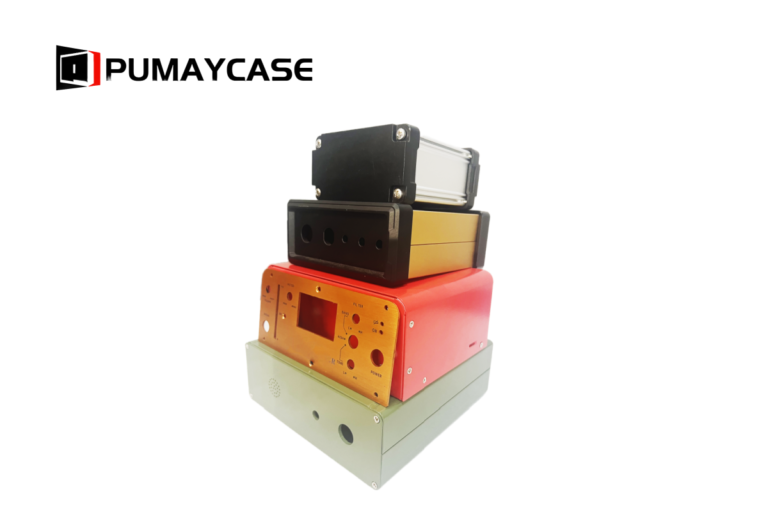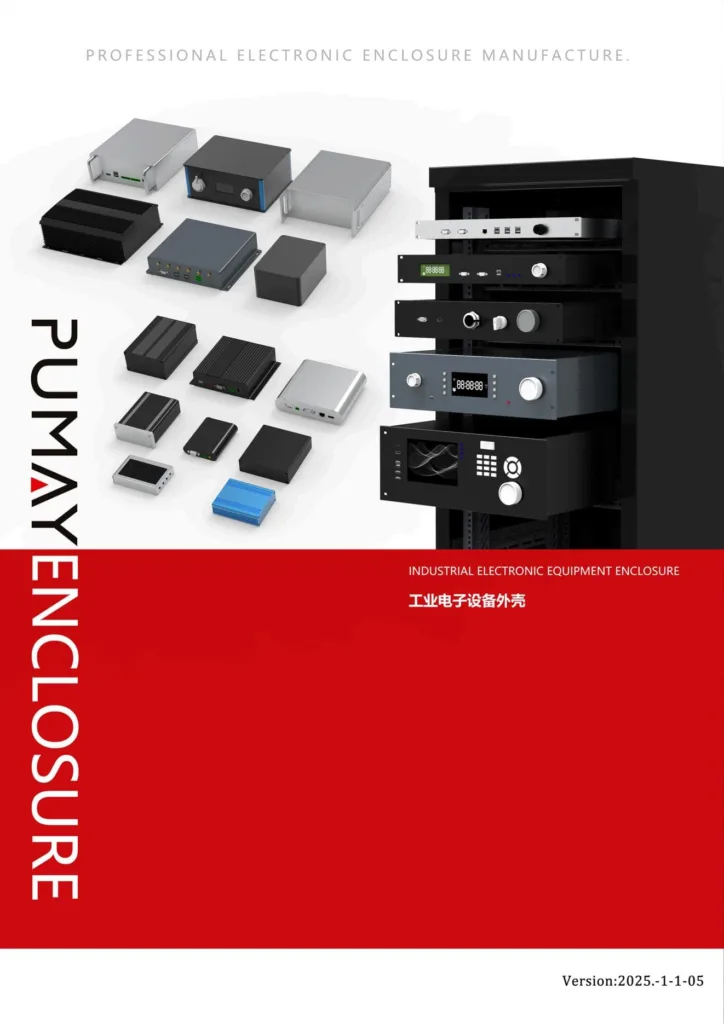Aluminum enclosures are known for their strength, durability, and resistance to corrosion. However, over time, exposure to environmental factors and physical stress can lead to surface damage. How does this happen, and how can we prevent it?
Surface damage to aluminum enclosures is a common issue that can be avoided with proper care, treatment, and maintenance practices.
Let’s explore the causes of surface damage to aluminum enclosures and the strategies that can be employed to protect them.
How Do You Prevent Aluminium Corrosion?
Corrosion is one of the most common forms of damage to aluminum enclosures. When aluminum reacts with moisture, oxygen, or other chemicals, it forms an oxide layer. While this layer protects the underlying metal to some extent, if the conditions are right, it can lead to further degradation.
Preventing corrosion involves proper surface treatment, coating, and environmental control.
Methods to Prevent Aluminum Corrosion
Anodizing
Anodizing is an electrochemical process that thickens the natural oxide layer on aluminum. This enhances the metal’s resistance to corrosion and improves its appearance. Anodized aluminum is less likely to corrode in harsh environments.Protective Coatings
Applying coatings like powder coating or paint forms a barrier on the surface of aluminum, preventing moisture and air from interacting with the metal. These coatings can also provide UV protection.Sealing
Proper sealing of joints and seams can help protect aluminum enclosures from water ingress. Silicone-based sealants are commonly used in this process, ensuring the enclosures remain water-resistant.Use of Corrosion Inhibitors
Corrosion inhibitors can be added to the environment or applied to aluminum surfaces to minimize the risk of oxidation. These inhibitors work by preventing the chemical reactions that lead to corrosion.
| Method | Description |
|---|---|
| Anodizing | Thickens the oxide layer for better protection |
| Protective Coatings | Paint or powder coatings to create a protective barrier |
| Sealing | Sealing joints and seams to prevent water ingress |
| Corrosion Inhibitors | Chemicals that prevent corrosion by blocking oxidation |
What Is the Major Type of Damage to Aluminum Structures That Is Caused by Exposure to the Weather?
Weather conditions can cause a variety of damages to aluminum enclosures. Exposure to elements like rain, UV rays, salt, and temperature fluctuations can significantly impact the structural integrity and appearance of aluminum.
The most common weather-related damage includes corrosion, surface pitting, discoloration, and weakening of the material over time.
Types of Weather-Induced Damage
Corrosion
Prolonged exposure to moisture and oxygen can cause corrosion. Saltwater environments, like coastal areas, accelerate this process, leading to more severe damage.Pitting
Pitting is a form of localized corrosion that creates small holes or depressions in the surface of the aluminum. This is particularly common in marine environments where saltwater is present.Discoloration
UV radiation from the sun can cause the aluminum surface to fade or change color. This discoloration affects the aesthetic appeal of aluminum enclosures, especially those used in consumer-facing applications.Expansion and Contraction
Extreme temperature fluctuations can lead to the expansion and contraction of aluminum. Over time, this can weaken the material and cause cracks or warping.
Key Weather Factors
- Moisture: Accelerates corrosion and pitting.
- Salt: Increases corrosion, especially in coastal areas.
- UV Radiation: Causes fading and discoloration of surfaces.
- Temperature: Extreme temperature changes cause expansion and contraction, leading to material fatigue.
| Damage Type | Cause | Impact |
|---|---|---|
| Corrosion | Moisture, oxygen | Weakens metal, creates holes |
| Pitting | Saltwater, moisture | Localized damage, surface degradation |
| Discoloration | UV radiation | Aesthetic degradation |
| Expansion and Contraction | Temperature fluctuations | Cracks, warping |
How Can You Prevent Aluminum Exposure?
Aluminum exposure to the elements can be minimized by employing protective measures to shield the material from direct contact with damaging factors like water, chemicals, and sunlight.
Limiting exposure and using protective coatings are key to extending the lifespan of aluminum enclosures.
Protective Measures to Limit Aluminum Exposure
Strategic Placement
Position aluminum enclosures in places where they are less likely to be exposed to harsh weather conditions. For example, placing them under awnings, canopies, or in sheltered areas can help limit exposure to rain and UV rays.Use of Covers or Housings
Protective covers or additional housings can help shield aluminum enclosures from direct environmental exposure. These covers should be made of weather-resistant materials like rubber or plastic.Proper Ventilation
Ensuring that the aluminum enclosure has proper ventilation allows air to circulate, preventing moisture build-up inside and reducing the risk of internal corrosion.Environmental Controls
In environments where aluminum exposure cannot be avoided, environmental controls like dehumidifiers or controlled temperature settings can reduce the potential for moisture accumulation and extreme temperature changes.
| Measure | Description |
|---|---|
| Strategic Placement | Position enclosures in sheltered areas |
| Use of Covers or Housings | Use protective covers to shield from weather |
| Proper Ventilation | Ensure airflow to reduce internal moisture |
| Environmental Controls | Control temperature and humidity to reduce exposure |
How Do You Protect Aluminum Surfaces?
Protecting aluminum surfaces requires a combination of prevention techniques, from applying coatings to routine maintenance. Regular care ensures that the aluminum remains durable, functional, and visually appealing.
Proper surface protection helps maintain the integrity and appearance of aluminum enclosures over time.
Steps to Protect Aluminum Surfaces
Cleaning and Maintenance
Regular cleaning removes dirt, grime, and other pollutants that may cause damage to the surface. Use a mild detergent and soft cloth to avoid scratching the surface. Avoid abrasive cleaners that can remove protective coatings.Applying Protective Coatings
Coatings like powder coating or anodizing should be reapplied as needed to ensure continued protection. These coatings prevent exposure to moisture, UV radiation, and physical abrasions.Inspection and Early Detection
Regularly inspect aluminum enclosures for signs of damage like corrosion, pitting, or cracking. Early detection allows for timely repairs, preventing further damage.Use of Protective Films
For highly exposed surfaces, applying transparent protective films can prevent scratches, abrasions, and chemical exposure while maintaining the appearance of the aluminum.
| Protection Method | Description |
|---|---|
| Cleaning and Maintenance | Regular cleaning prevents surface degradation |
| Applying Protective Coatings | Reapply coatings to protect from external factors |
| Inspection and Early Detection | Look for damage to prevent further degradation |
| Use of Protective Films | Transparent films protect from scratches and chemicals |
Surface damage to aluminum enclosures can be minimized with proper treatment, maintenance, and protective measures. By preventing corrosion, exposure to harsh weather, and surface abrasions, aluminum can maintain its strength, appearance, and longevity.





